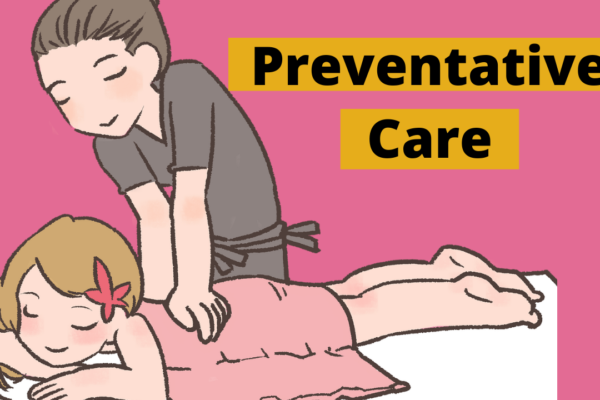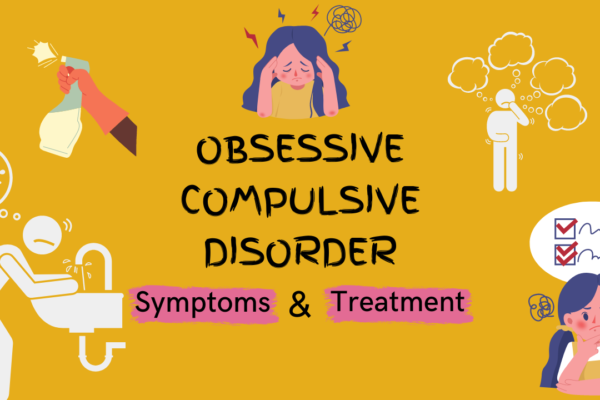Table of Contents
How To Cope With Depression in 12 Proven Steps: Step 4
Before reading on, be sure to review the skills discussed in my previous post, How To Cope With Depression in 12 Proven Steps: Step 3.
In this post, I will cover:
- Techniques for changing unhealthy thoughts into useful ones
- How to increase you helpful thoughts
- Identifying your healthy thoughts
- Balancing thoughts with “yes, but” statements.
- Planning for a worry/problem solving time.
Locate Your Healthy Thoughts
Close you eyes and try to think about the last time that you were feeling really good, happy. Ask yourself, what was the context: where were you, who were you with and what were you doing? Now, the really important question: what were you thinking?
Next: Write down the thought.
- Was it accurate, balanced and complete?
- What feelings can you associate with the thought?
- Does this thought give you strength, courage, self-respect, gratitude?
- What type of thoughts can help you maintain a positive perspective?
You see, it is hard to jump right into identifying your healthy thoughts, because they are often pre-cursors to our emotions, and reactions to events; they are how we interpret the circumstances around us. Thus, it is often easier to search out our emotions and correlated events and then work backwards to explore our associated thought process.
Balancing Your Thoughts with “Yes, But” Statements
We have talked a lot about how to challenge our skewed assumptions and flip our negative thoughts. But what are we to do if our unpleasant thoughts are factual?
Try to be Objective: You can place yourself in a supportive role by pretending that your friend is the one experiencing the unfortunate event. Try to think of the encouraging things you would say to your friend, and what kind of support you could offer. Now, allow this to become your self-talk. Give yourself the same love and compassion that you would to your friend and attempt to gain perspective.
Accept what is: The irony of unfortunate events is that it is the rumination and rejection of them that keeps us stuck and paralyzed from them, robbing us of the mental energy we need to gain new traction and move beyond them toward our goals and recovery. We cannot go around our regrets, we must move through them with acceptance. How can I accept bad things you might wonder? Because acceptance is not assents. We are not saying we are in alliance or agreement, or that what happened is right, or moral. We are saying that we acknowledge that it occurred, and that a multitude of contributing factors, and many if not all, were outside of our control, which gave birth to it; that is all.
It is hard to accept unpleasant truths, and so, we need to find methods to help us find our way past them. One such effective method is using a small, but powerful phrase, “yes, but”, and add it as an extension to our thoughts. This helps us from ignoring the unpleasant, accept things, and look beyond them to what is praiseworthy, meaningful and larger than our loss. It helps to add balance to our universe.
Example of an unpleasant thought: “My spouse left me because I did not hold up my end of the marriage. No one will want to be with such a terrible partner.”
Example of adding a “yes, but” statement: “Yes, my spouse left me because I did not communicate that I was struggling with depression, but I am working really hard on my recovery now and to be a better communicator, and will be a better partner in my next relationship as a result.”
Scheduling a Worry/Problem Solving Time
We do not want to ignore our problems, however, spinning our wheels on pending concerns is not productive, and prevents us from being able to be an active participant in the present (here and now), which inevitably interferes with our relationships, our performance and concentration. Anxious thoughts, rumination and worry can impact our sleep, which places us at a greater disadvantage the following days, because when we are sleep deprived, we have less distress tolerance, are more irritable, more prone to illness, and our critical thinking takes a nose dive. In short, anxiety limits us in Identifying your healthy thoughts.
There is a two step process/skill that allows for better management of our anxious thoughts.
STEP 1: Keep a worry/problem journal. This does not have to be anything fancy, just accessible. It can be a note app on your phone, a physical notebook, a lined piece of paper. You want to keep it readily available so that when you have an intrusive thought of worry or concern, you can jot it down. Now, only write down the concern in definitive and concise terms, like a single sentence. We are not looking to jot down paragraphs of your associated thoughts here, it is not that kind of journal. The goal here is to get them out of your head and onto paper so you can get about your business without getting derailed.
STEP 2: Schedule a worry/problem solving time. This can be once a week, or daily, at a pre-determined time when you plan to sit down and brainstorm ideas to address your concerns. I say brainstorm, because as you sit down to explore ideas to resolve your concerns, it is vital that you do so without judgement. Judgement will block your thought process, and no idea is a good or bad, just get them out there, and you can prioritize them later.
Also, it is important to set a time limit on your worry time. We do not want to go so deep down the rabbit whole that you lose time that is needs to be focused on other priorities. After jotting down some bullet points on potential solutions, pick one or two to follow up on and then put it away.
If you find it difficult to put your worry-some thoughts away after putting your worry journal away, remember that you have already set an appointment to return and pick up where you left off.
Now that you have learned to set some healthy boundaries on your anxious thoughts, you will find in time that your anxious thoughts become fuel for productive and proactive behavior, as opposed to a waste of time and precious mental real-estate.
Recap
- You can use “yes, but” statements to turn your old unhealthy thoughts into more productive ones and get in the habit of Identifying your healthy thoughts.
- You can repurpose your anxious thoughts into fuel for proactive behavior by journaling and planning a routine problem-solving time.
Practice
- Track your mood using the Quick Mood Scale Tool (FREE download when you subscribe to my email list at the bottom of this post)
- Try using “yes, but” statements to pivot away from your stubborn negative thoughts vs avoiding them. This helps in Identifying your healthy thoughts.
- Start keeping a worry journal in whatever fashion suits your style and then schedule a time to address them by trying out possible solutions.
Question: Did you practice the skills we discussed? How was it tracking your mood and/or your thoughts and trying to replace your thoughts? I would like to know what your experience has been like. Please leave a comment below to let me know how it is going and feel free to ask any questions you may have.
Looking Ahead
Congratulations! You have just finished the last set of skills under the first pillar of fundamental coping skills for depression, the relationship between your thoughts and your mood.
Up next: In my next post on fundamental coping skills for depression, I will be covering:
- We will start discussing the second pillar of coping skills for depression, activities in relation to your mood. A common struggle with depression is Anhedonia, or the loss of interest in activities that you used to enjoy. This is often expressed by clients as a lack of motivation, feeling blah. In the next series of posts, I will cover the purpose and importance of engaging in activities in spite of the feeling to isolate and avoid, as it is a vital part of recovery and starting the path to feeling better, like your best self again.
- The relationship between activity and your mood
- How depression interferes with engaging in activities
- Identifying previous enjoyable activities
It is my mission to equip you with valuable and effective coping skills and clinical interventions, to improve your mood, be more productive and improve your quality of life, so you can do more, and worry less.
ASK: If you have a question you’d like me to answer here on the blog (even if you think it’s a silly one!), please use the form on the CONTACT ME page, or the comment section below. I would be happy to take a poke at it and provide a long form answer when appropriate.
SHARE: Also, be sure to share it with a friend, as there is still a lot of work to be done in raising mental health awareness.
SUBSCRIBE to get your FREE MOOD TRACKING TOOL and quick Mental Health Hacks in addition to this newsletter. Sign-up with the form below.
Recommended Reading
Heads up: This article/page does contain affiliate links to products sold on Amazon, which I recommend in the context of this discussion, because they have proved to be helpful to me and/or my clients. As an Amazon Associate I earn from qualifying purchases by way of commission at no additional cost to you.

NEED CRISIS HELP? If you need immediate crisis help with your depression, you can call the National Suicide Prevention Lifeline at 1-800-273-8255 or text “START” to 741-741
OUTSIDE THE UNITED STATES: See International Suicide Hotlines
WHERE TO FIND MENTAL HEALTH HELP:
-NAMI Referral Helpline: 1-800-950-6264
-California’s Statewide Mental Health Helpline: 1-855-845-7415
The fundamental coping skills for depression being covered over the next several posts are derived from an evidenced-based practice of psychotherapy known as Cognitive Behavioral Therapy (CBT), in which I am certified to practice by the Academy of Cognitive Therapy. For those who are not familiar with theoretical models or therapeutic interventions, an evidenced-based practice (EBP), is a term that describes “a best practice”; one that has been tested and researched and shown to be an effective treatment for a specific condition with results that are sustainable (the scientific method). Aaron T. Beck is the father of Cognitive Behavioral Therapy, and the skills discussed in this series of posts are derived from his work (and his cohorts) which are referenced at the end of this article.
References
Group Cognitive Behavioral Therapy for Depression:-Jeanne Miranda, Ph.D; Stephanie Woo, Ph.D.; Isabel Lagomasino, M.D., M.S.H.S.; Kimberly A. Hepner, Ph.D.; Shelley Wiseman, B.A.; and Ricardo Muñoz, Ph.D. Revised August 2006.
admin
Latest posts by admin (see all)
- Thriving with Autism and ADHD: Expert Strategies for Managing Burnout - April 22, 2024
- Serial Killer Spotlight: Dr. Caparelli’s True Crime Analysis - April 14, 2024
- Donna’s Law: Stop Gun Suicides - March 22, 2024









